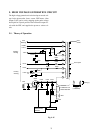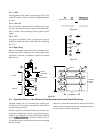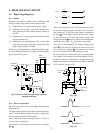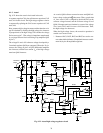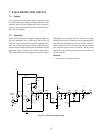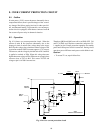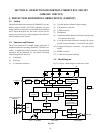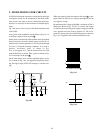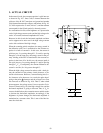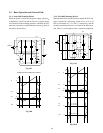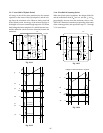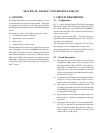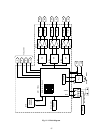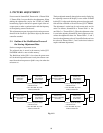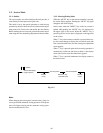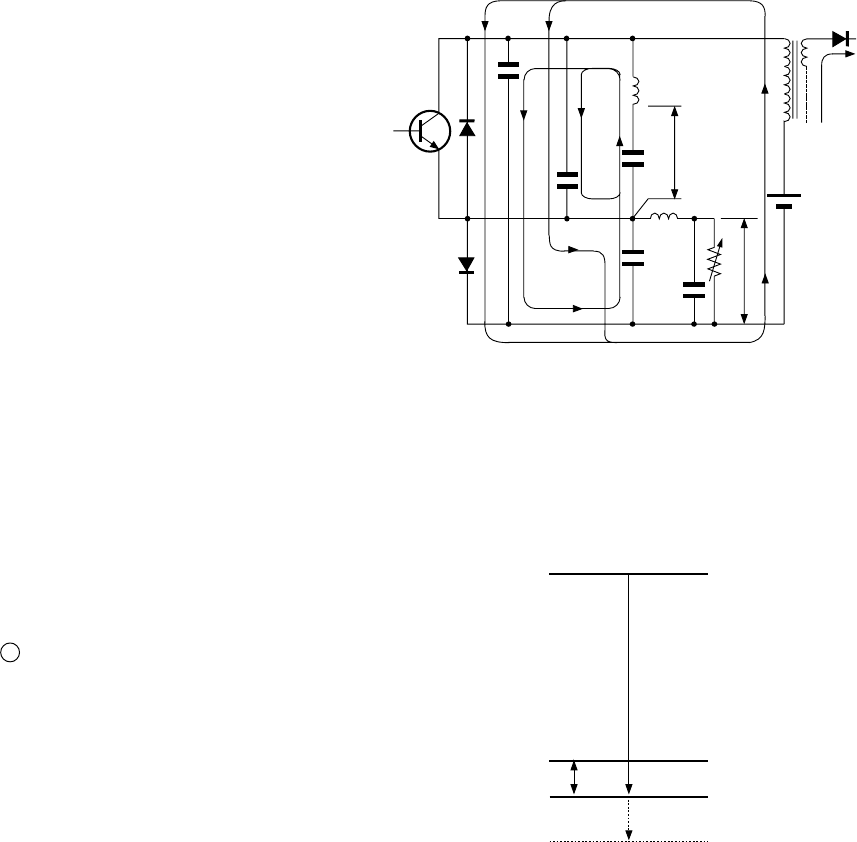
83
3. ACTUAL CIRCUIT
In the actual circuit, the resonant capacitor is split into two
as shown in Fig. 10-7. One, C440, is inserted between the
collector of the H. OUT transistor and ground and another
C444 inserted between the collector and emitter. In Fig. 10-
5, C440 is expressed as C
1
and C444 as C
2
, and the resonant
current path for the flyback period is shown by arrows.
In a conventional circuit, when brightness of a picture tube
varies, high voltage current varies and the high voltage also
varies. As a result, horizontal amplitude also varies.
However, in this circuit, the horizontal amplitude variation
can be suppressed to near zero if the high voltage current
varies with variation of the high voltage.
When the scanning period completes, the energy stored in
the deflection yoke L
DY
is transferred to the resonant ca-
pacitor in a form of current I
Y
. In this case, the current is
split into two; I
Y1
passing through C
1
, C
3
and I
Y2
passing
through C
2
. In the same way, the energy stored in the pri-
mary winding of the FBT is transferred to the resonant ca-
pacitor in the form of I
P
. In this case, the current (path) is
also split into two; I
P1
passing through C
1
and I
P2
passing
through C
2
, C
3
. Concequently, the current differences be-
tween I
Y1
and I
P2
(I
Y1
-I
P2
) passes through C
3
.
When the high voltage current I
H
reduces with a dark pic-
ture, the current I
P
in the primary circuit decreases, so I
P1
and I
P2
also decrease. However, a current flowing into (I
Y1
-
I
P2
) increases as I
P2
decreases. As a result, the pulse devel-
oping at the point B increases and the voltage Vm at Csm
also increases as shown in Fig. 10-8. That is, when a dark
picture appears, the voltage across S-curve capacitor C
S
in-
creases as shown in Fig. 10-8, the high voltage rises, and the
horizontal amplitude is going to decrease. But, as V
S
in-
creases, the deflection yoke current increases and this works
to increase the horizontal amplitude. Accordingly, if the
brightness of picture changes, the horizontal amplitude is
maintained at a constant value. This is one of the fine fea-
tures the circuit has.
FBT
I
H
V
B
Vm
Csm
C
3
V
S
C
S
Lm
C
2
I
P2
I
Y1
I
Y1
C
1
I
Y
I
P2
I
P1
L
DY
H.
OUT
I
P
I
Y2
VS
V
B
0
Vm
Fig. 10-5
Fig. 10-6



